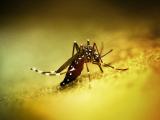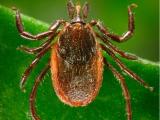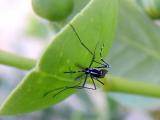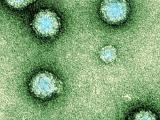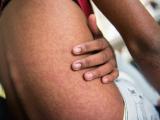With chikungunya, a viral disease that causes severe joint pain, spreading in the Caribbean, a US expert said today that the virus is likely to reach other parts of the Americas, possibly including the United States.
"We expect chikungunya to continue to spread to other areas in the Americas," said J. Erin Staples, MD, PhD, of the Centers for Disease Control and Prevention (CDC), during a teleconference to educate clinicians about the mosquito-borne disease.
From 2006 to 2009, 106 chikungunya cases were identified in travelers returning to the United States, but those cases did not trigger any local outbreaks, Staples said. "But with outbreaks now in the Caribbean, we anticipate the number of cases in travelers will increase, which may result in introduction and local spread in some areas of the US."
Cases jumped last week
In December, chikungunya cases on the Caribbean island of St. Martin marked the first outbreak in the Americas involving local transmission. The number of cases there and on neighboring islands has grown steadily since then.
The count of confirmed cases in the region jumped by 490 between Feb 7 and 14, reaching nearly 2,000, the European Centre for Disease Prevention and Control (ECDC) said in its weekly Communicable Disease Threats Report issued yesterday. It said there has been one death.
The island of Martinique had most of the new confirmed cases with 326, the ECDC reported. Other islands and countries that reported new cases included the French part of St. Martin, 52; the Dutch side of St. Martin, 5; Saint Barthélemy, 21; Guadeloupe, 81; Anguilla, 4 imported cases; and French Guyana, 1 imported case.
When probable cases are included, the total number of cases in the region is 2,106, according to a breakdown in the full ECDC report.
Chikungunya virus is spread mainly by Aedes aegypti and A albopictus mosquitoes, which are widespread in the Americas and also carry the dengue virus, Staples said in the teleconference. She called those species "aggressive daytime biters."
"We're not able to predict yet if chikungunya would become endemic to the US," she said in answering a question. Many parts of the country, particularly the Southeast, have mosquitoes that could become infected, and they could see small, localized outbreaks, similar to recent outbreaks of chikungunya in Europe and of dengue in the United States, she added.
Staples said there are signs that the Asian strain of chikungunya virus circulating in the Caribbean is preferentially spread by A aegypti. In the United States, that species is limited to southern states, suggesting that any related US outbreaks would be in those states, she said.
She explained that in people infected with chikungunya, the virus multiplies to high levels in the blood, so mosquitoes that bite them can become infected and spread the virus to other people. That means patients should be protected from mosquitoes to help prevent more cases.
Most infected people get sick
Describing the disease, Staples said 72% to 97% of infected people experience symptoms—far higher proportions than is true of West Nile virus and dengue, both of which are likewise mosquito-borne.
The main symptoms are fever and pain in multiple joints on both sides of the body, typically in the hands and feet, but in other joints as well. The disease has very low mortality, but groups at risk for more severe cases are neonates, those over 65 years old, and those with various chronic conditions, such as cardiovascular disease, Staples said.
The acute symptoms usually resolve in 7 to 10 days. However, some patients have persistent joint pain that continues for months to years afterward, she said.
With no specific treatment for chikungunya, "the mainstay is supportive care with fluids and rest," Staples commented.
There is no vaccine for the disease either. "There have been several vaccines in preclinical or early clinical development, but nothing in the pipeline now that we'd expect to be available anytime in the near future," she said.
She explained that one of the difficulties in vaccine development is that when outbreaks occur, they tend to be large and to move through populations fairly quickly. "Trying to predict when and how an outbreak might spread is one of the limitations."
Concerning testing for chikungunya, labs that offer testing include the CDC, state health department facilities in California, Florida, and New York, and one commercial lab, Focus Diagnostics, Staples reported. She added that cases should be reported to state health departments, and the latter are encouraged to report them to the CDC.
Staples was asked whether chikungunya infection confers lasting immunity to the virus. She replied that on the basis of limited information, the CDC believes that's the case.
"But some people who get infected feel better for a short period of time but then get those persistent symptoms, so it might seem like they were re-infected, but it's in fact a continuation of the symptoms they had," she added. "We would not expect someone to get re-infected years later."
As for infection control issues, the CDC believes chikungunya is mostly a bloodborne pathogen, with no evidence of droplet or respiratory transmission, Staples said.
See also:
Related Feb 10 CIDRAP News item
Feb 17 ECDC update covering chikungunya in Caribbean
Related Dec 30, 2013, CIDRAP News story
CDC chikungunya information for healthcare providers
CDC Travelers' Health article on chikungunya



